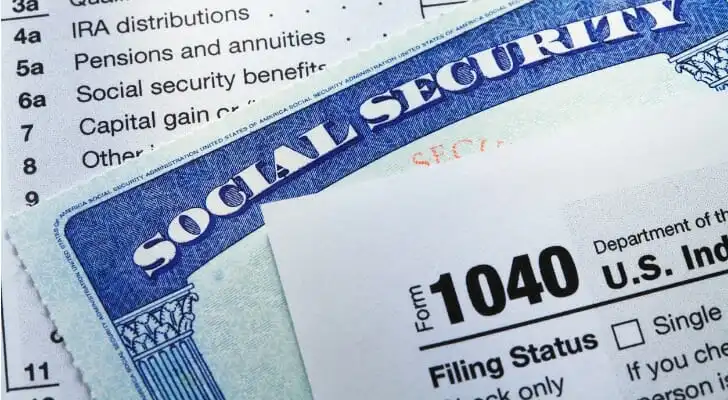The maximum Social Security benefit in 2025 is $5,181 per month or $62,172 for the year, assuming a retirement age of 70. Most people do not get that much, though. The average Social Security check for retired workers as of 2025 is $2,008.31. Some careful planning can help you max out your Social Security benefits and claim the largest amount possible.
A financial advisor can help you plan around Social Security. Connect with a financial advisor today.
Maximum Social Security Benefit and How to Get It
In 2026, the maximum Social Security benefit is $5,181 per month if you started receiving benefits at full retirement age (66 now and 67 for people born in 1960 or later). The highest benefit amount of $5,181 is available to recipients who claim Social Security beginning at age 70 Here’s what you would need to do to maximize your benefit.
Work for at Least 35 Years
The Social Security Administration (SSA) calculates your final benefit amount based on your earnings for the 35 years when you made the most money. It then indexes your annual earnings, meaning it adjusts for inflation, then takes the average of the 35 indexed amounts.
Here’s the key takeaway: If you have income for less than 35 years, the SSA will give you a zero for those years short of 35.
Those zeroes can bring down your average significantly, so the more years that you can work, the better You can view your earnings record by creating an online Social Security account.
Work Until Full Retirement Age
Another step you can take to maximize your Social Security benefits is to work until your full retirement age (FRA). Originally, this number was set at 65. But it has been steadily creeping up, thanks to the passage of the Social Security Amendments of 1983 (H.R. 1900, Public Law 98-21). Starting in 2000, the full retirement age has been increasing in two-month increments so that as of 2025, it’s 67 for people born in 1960 or later.
If you don’t wait till your FRA, the earliest you can start receiving Social Security is 62 years old. However, your benefit will be reduced by up to 30% if your FRA is 67 in this case.
Whether you can make it until your full retirement age may depend on your job security and overall health. If you develop a chronic condition, for instance, you may need to reduce hours or leave your job altogether. Every year can you delay, however, could get you a step closer to your maximum Social Security benefit.
Work Until 70

The longer you hold off receiving your Social Security benefits, up to age 70, the bigger your check. For each month after you reach your FRA, your payout increases by roughly 0.7% (assuming your FRA is 66), which amounts to 8% per year. If you wait till age 70 to claim benefits, your payments will be 32% bigger than if you had started taking them at 66. Once you turn 70 there is no added benefit in postponing payments.
Of course, working until 70 isn’t for everyone, and there’s no penalty in claiming your benefits when you reach your FRA.It’s also not a sure thing that waiting until 70 maximizes your lifetime benefit.
After all, should you pass away the following year, waiting that long will mean you received far less total benefits than if you’d claimed them as soon as you were eligible to. So consider your life expectancy as you make this decision.
Earn More at Your Place(s) of Employment
I have some low-earning years in your 35-year work record (say, from part-time jobs during college), replacing them with higher-earning years could help increase your maximum Social Security benefit.
That could mean staying in your current role longer, or angling for a promotion to a better-paying position within the same company. You may also consider moving to a new organization to unlock higher pay or enhanced employee benefits.
Starting a side hustle or business, or taking on a part-time job could also give your earnings record a boost. Keep in mind, however, that increasing your income to max out your Social Security benefits later could result in a higher tax liability now. Taking advantage of all the credits and deductions you’re eligible for can help keep your tax bill as low as possible.
Watch How Much You Earn in the Years Preceding Full Retirement
Can you claim Social Security while working? Yes, but that could shrink your benefit amount. The SSA has imposed earning limits for individuals who have entered early and full retirement. Those limits, and the impact on your benefits, depend on how close you are to your full retirement age.
In 2026, an early retiree can make $24,480 in gross wages or net self employment earnings without penalty. Any overage will result in $1 deducted from their Social Security check for every $2 earned above this amount.
Once you reach the year of your full retirement age, you can bring in $65,160 prior to the month of your full retirement birthday without penalty. For every $3 earned above this amount, the SSA will deduct $1 from your Social Security payment. These limits also affect the amounts family members can receive from your claim.
Once you’ve reached full retirement age, earnings no longer impact your benefits.
Avoid Social Security Tax Traps
The IRS uses four elements to determine when Social Security benefits are subject to income tax. These elements comprise what the service calls provisional income. They are:
- Capital gains and dividends
- Half of Social Security benefits
- Nontaxable interest
- Ordinary income (including wages and IRA withdrawals)
Either up to 50% or up to 85% of your benefits can be subject to federal taxation. The amount of tax you owe depends on your provisional income and filing status.
A 50% tax applies to:
- Single filers with provisional income between $25,000 and $34,000
- Married couples with provisional income between $32,000 and $44,000
An 85% tax applies to:
- Single filers with provisional income exceeding $34,000
- Married couples with provision income exceeding $44,000
For example, say a married couple withdraws $30,000 from an IRA and receives $40,000 in Social Security. Half of that Social Security money ($20,000) is used for the IRS equation and is combined with the $30,000 IRA withdrawal to bring the couple’s provisional income to $50,000. Since that is above the $44,000 threshold for couples, then up to 85% of their Social Security is taxable.
If you’re looking to avoid this, try reducing your taxable income to reduce the amount of taxes. This can be achieved by looking at all of your adjusted gross income (AGI) and evenly distributing your funds over the span of a few years, so there are no sudden increases or decreases.
How COLAs Influence Social Security Benefits
To help offset the effects of inflation, Social Security payments are adjusted annually through cost-of-living adjustments (COLAs). These adjustments are based on changes in consumer prices, as measured by the Consumer Price Index for Urban Wage Earners and Clerical Workers (CPI-W). When consumer prices rise, monthly Social Security benefits are increased to help maintain purchasing power for recipients.
Here are some key things to know about how COLAs impact your Social Security benefits.
- For individuals already collecting benefits, COLAs are typically reflected in their payments starting each January.
- If you delay receiving benefits past your full retirement age, either to increase your base amount or wait until age 70, your future benefits will still include COLAs, but only for the years after your first payment begins.
- Delaying does not give you retroactive increases for the years you waited, but the larger base benefit combined with ongoing COLAs can lead to significantly higher monthly income over time.
COLAs are not fixed and can fluctuate. In some years, the adjustment may be negligible or even zero, while in periods of high inflation, the increases can be substantial. That can make a difference in your long-term retirement income, and affect how you plan your budget from year to year.
Incorporating future COLAs into your retirement projections may offer a more accurate picture of your expected income. The longer you receive benefits from Social Security, the more noticeable the impact of COLA adjustments becomes.
How to Determine the Best Return for Your Spouse/Domestic Partner

Married couples have two ways to receive Social Security benefits. A person can claim benefits based on his or her own earnings, or delay claiming them and take half of the partner’s payout instead. To be eligible, a marriage must be a minimum of 10 years old, but the relationship need not be current. In other words, you can be divorced, though if you are claiming the spousal benefit, you cannot be remarried.
Generally, the higher earner should delay claiming benefits based on his or her record. But if that person worked for fewer years and has zeroes on his or her record, you’ll want to compare how much your Social Security checks will be at FRA to decide.
If your check is bigger, it makes sense for you to claim your spousal benefit and delay filing for the benefit based on your earnings until you’re 70 (your spouse has to file too, in order for you to receive your spousal benefit). When you turn 70, you would file for your benefit. If your check is more than twice as big as your spouse’s benefit, he or she should now file for the spousal benefit.
Another advantage of this strategy: Should the higher earner die first, the widow or widower would receive the larger benefit.
Let Your Family in on Your Social Security Benefits
In addition to your spouse, other family members could receive your Social Security benefits. That includes:
- Biological children
- Stepchildren
- Adopted children
Those who are eligible can receive payments that amount to one-half of your full allocation on a monthly basis. Children can get benefits if they are unmarried and either under age 18, 18–19 and in high school full-time, or 18 or older with a disability that started before age 22.
There is also a limit to the amount your family members can claim based on a worker’s earnings record. This is also known as a family benefit maximum (FBM). The maximum only applies when there are multiple-payment recipients on one record.
Bottom Line
Getting the maximum Social Security benefit can ensure a more secure retirement. Strategies that support this goal include working longer, increasing earnings to replace low-income years, and understanding how earnings limits and tax rules affect benefit amounts. Planning around these factors, as well as incorporating cost-of-living adjustments and spousal strategies, can make claiming benefits less stressful.
Tips for Retirement Planning
- A financial advisor can help you make key decisions surrounding Social Security and other aspects of your retirement plan. Finding a financial advisor doesn’t have to be hard. SmartAsset’s free tool matches you with vetted financial advisors who serve your area, and you can have a free introductory call with your advisor matches to decide which one you feel is right for you. If you’re ready to find an advisor who can help you achieve your financial goals, get started now.
- Even after you max out your benefits, chances are Social Security won’t pay as much as what you earned. To make up the difference, you’ll need to draw on your nest egg. To find out how large a nest egg you’ll need, use SmartAsset’s retirement calculator.
Photo credit: © iStock/DNY59, © iStock/RainStar, © iStock/g-stockstudio
